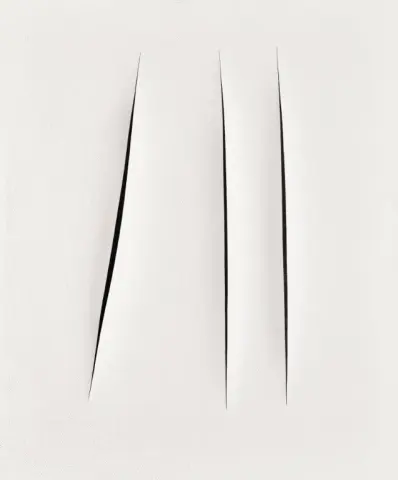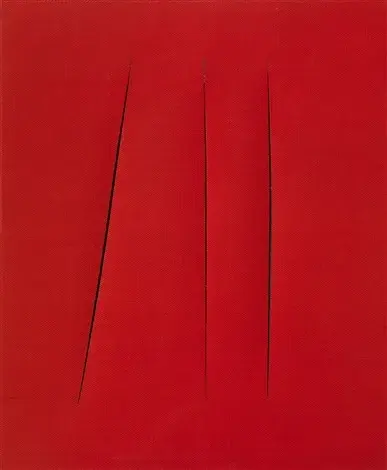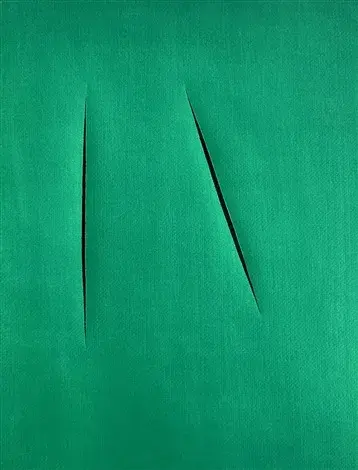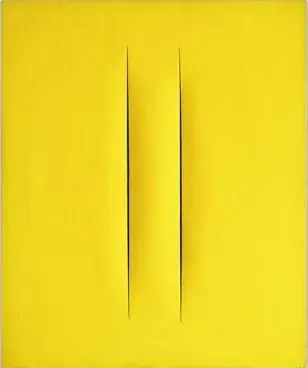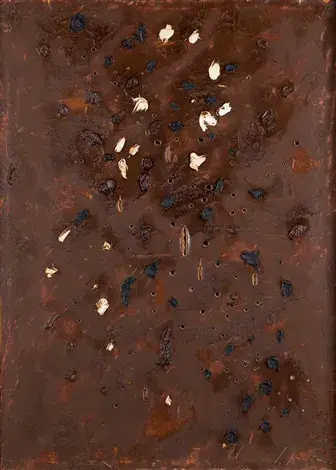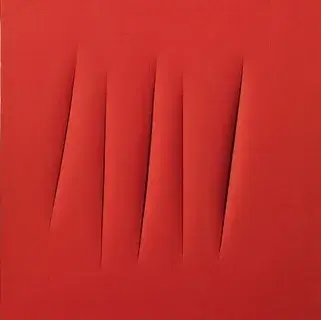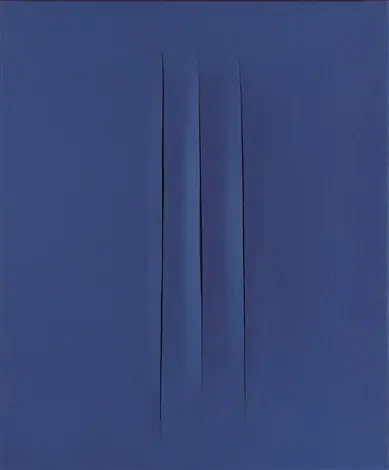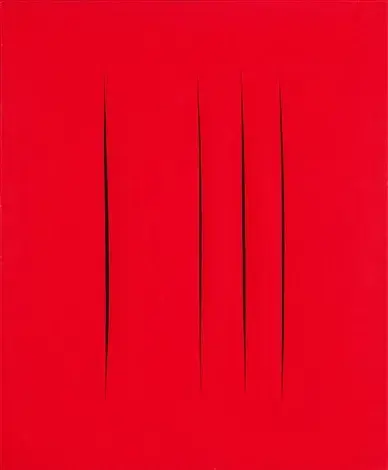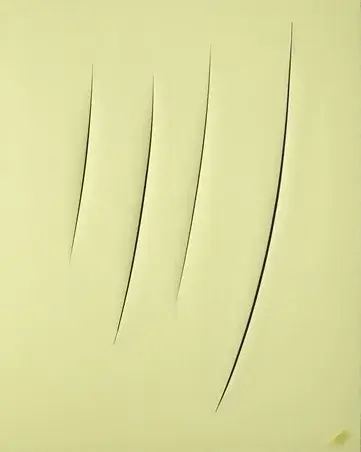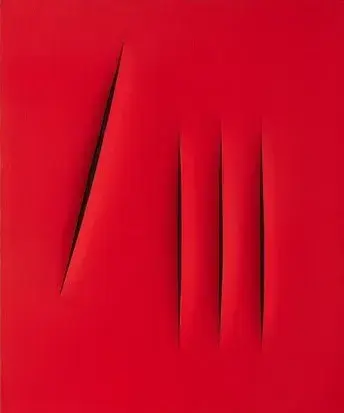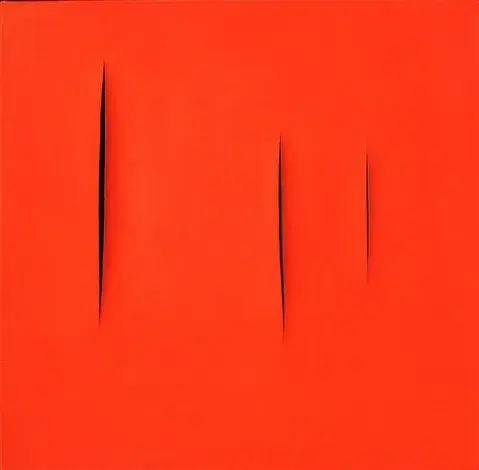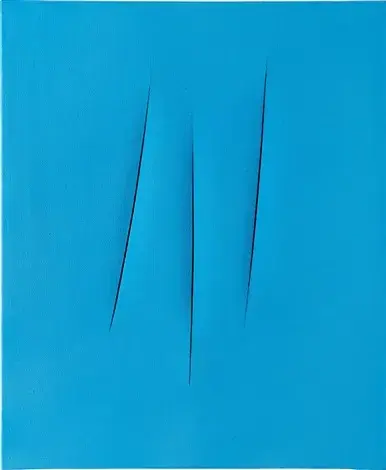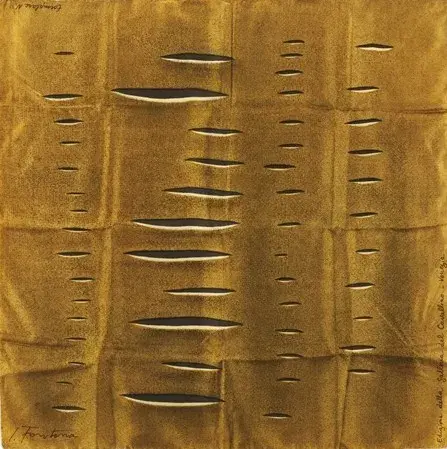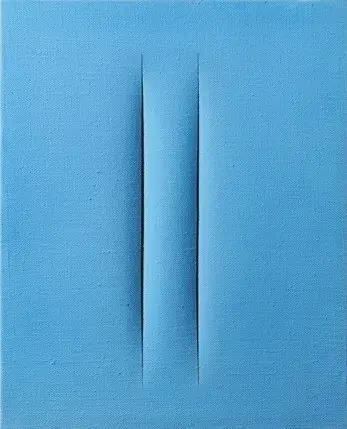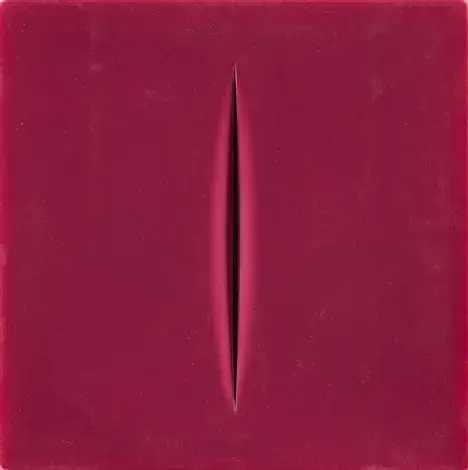

Hand painted reproductions of Lucio Fontana
Lucio Fontana: Pioneer of Spatial Art
Lucio Fontana (1899–1968) was an Italian artist whose revolutionary contributions to modern art transformed the traditional boundaries of painting and sculpture. Known for his groundbreaking explorations of space and form, Fontana became one of the most influential figures in 20th-century art. His work challenged conventional ideas of surface and dimensionality, pushing the boundaries of visual art and inspiring future generations of artists.
Early Life and Education
Lucio Fontana was born in Rosario, Argentina, to Italian parents. His family moved back to Italy when he was a young child, where he grew up surrounded by the rich artistic heritage of the country. He initially pursued studies in architecture and design at the Academy of Fine Arts in Milan, but his interest shifted toward sculpture and painting. Fontana's early education in both the technical and artistic aspects of design greatly influenced his later work, particularly his focus on three-dimensional space.
In the late 1920s, Fontana began his formal artistic training, studying sculpture and later working under renowned artists in Italy. His early works were rooted in traditional techniques, but as he matured as an artist, he began to develop a unique approach that combined sculpture, painting, and space.
Artistic Development and Style
Lucio Fontana’s artistic career is defined by his radical departure from traditional art forms. His fascination with space, time, and the cosmos led him to create innovative works that blurred the lines between painting and sculpture. Fontana’s most famous works include his "Concetto Spaziale" (Spatial Concept) series, where he used slashes (or cuts) on the canvas to explore the void beyond the surface.
In the 1940s and 1950s, Fontana moved away from representational art and began to experiment with abstract and conceptual ideas. His use of the canvas as a material to explore spatial dimensions was revolutionary. He would cut, puncture, or slit the surface of the canvas to reveal what lay beyond it, suggesting that the artwork existed not only in two-dimensional space but also in a multidimensional, infinite space. This exploration of "the void" was central to Fontana’s work, and he was one of the first artists to formally acknowledge the potential of the canvas as a conduit for expression beyond traditional surface painting.
Fontana’s use of slashes on the canvas, known as the “Tagli” series, was a deliberate attempt to transcend the limitations of flat surfaces and bring art into a more dynamic and cosmic realm. By slicing through the canvas, he symbolized the breaking of traditional artistic boundaries and the opening of new spaces in art.
Another important aspect of Fontana’s work was his use of different media, such as ceramics, glass, and neon, in addition to his iconic canvases. His ability to work across different materials demonstrated his broad vision of spatial exploration and his desire to break free from the constraints of traditional mediums.
Themes and Significance
The central themes in Lucio Fontana's art include space, time, the cosmos, and the search for the infinite. His works suggest a profound connection between the physical world and the larger, unseen dimensions of existence. Fontana’s fascination with space and the void led him to explore the concept of nothingness, a recurring theme in his work.
Fontana’s slashed canvases, in particular, have come to symbolize the idea of opening up art to new possibilities and dimensions. The act of cutting the surface of the canvas represents a physical and metaphorical rupture, breaking the barrier between the viewer and the infinite. This rupture suggests a connection to both the spiritual and the cosmic, bridging the gap between human perception and the vastness of the universe.
Fontana’s work is also considered a precursor to the conceptual art movement, as he was among the first artists to focus on the idea and concept behind the work, rather than just the visual appearance. His work challenged the viewer to think beyond the traditional constraints of art and engage with the deeper, existential themes he explored.
Achievements and Influence
Lucio Fontana’s impact on the art world was profound, and his work has had a lasting influence on many contemporary artists. He became a leading figure in the post-World War II avant-garde movement and was closely associated with the international Spatialism movement, which sought to explore the relationship between art and space.
Fontana exhibited extensively in Europe and the United States, gaining widespread recognition for his innovative approach to art. His work was featured in major exhibitions, including the Venice Biennale, where he showcased his "Concetto Spaziale" series, drawing attention from critics and collectors alike.
Fontana's ability to blend painting, sculpture, and the concept of space into a single art form made him a key figure in the transition from modernism to postmodernism. His exploration of the "void" and the opening of the canvas laid the groundwork for future artistic movements such as minimalism and conceptual art.
In addition to his visual art, Fontana’s work had a significant influence on design and architecture. His ideas about space and form found resonance in fields beyond traditional art, inspiring architects, designers, and sculptors to consider the role of voids and dimensionality in their work.
Legacy
Lucio Fontana’s legacy as a pioneer of spatial and conceptual art is firmly established. His bold experimentation with the boundaries of painting, his exploration of the void, and his integration of space into visual art continue to inspire artists and art lovers today.
Fontana’s work is featured in major museums and galleries around the world, including the Museum of Modern Art (MoMA) in New York and the Guggenheim Museum. His iconic slashed canvases remain among the most celebrated works of 20th-century art.
Where to Find Reproductions of Lucio Fontana’s Art
Reproductions of Lucio Fontana’s groundbreaking works can be found in major art galleries and online retailers. These reproductions provide an opportunity to experience his unique exploration of space and form, bringing the visionary work of Fontana into your home.
Imagine owning an original-style painting by one of the greatest artists in history. At POD, we offer you the chance to make this dream a reality. Each canvas is faithfully reproduced down to the smallest detail, allowing you to experience the beauty of the artist’s vision in your own home.
Our reproductions are crafted by experienced painters using the finest materials and time-honored methods. We are committed to delivering works of exceptional quality that will inspire and bring joy to your family for generations to come.


